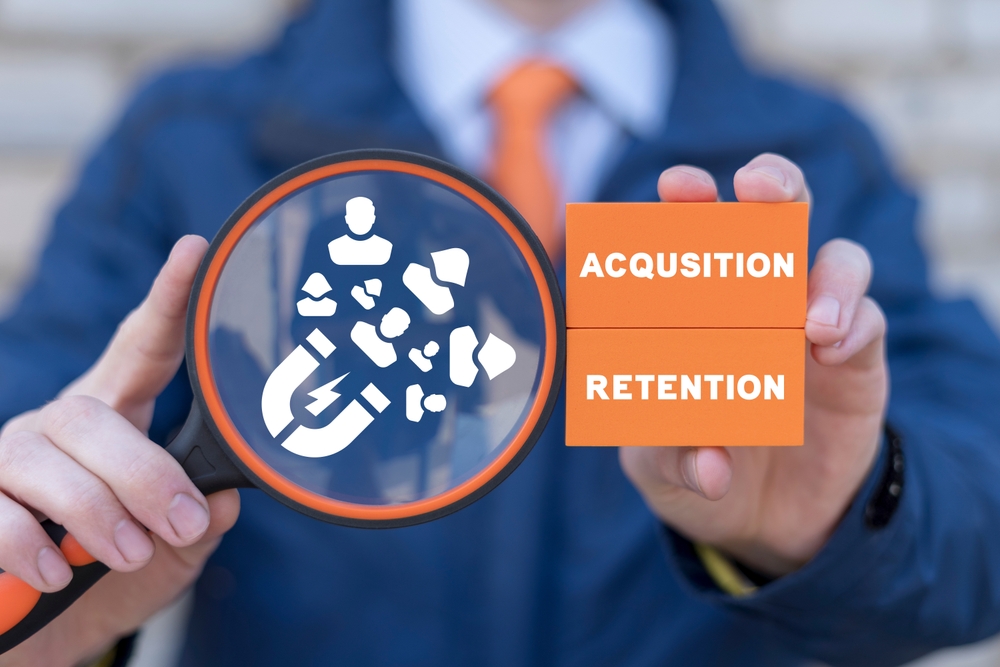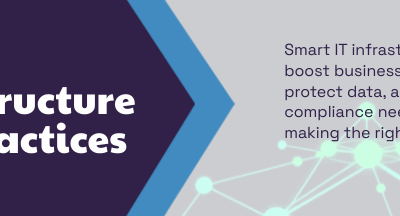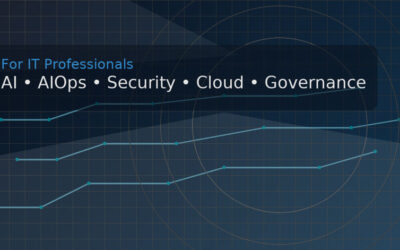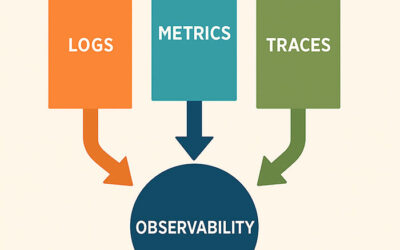Lead generation is the lifeblood of growth. Whether you’re offering a groundbreaking tool for project management or a niche solution for customer support, getting potential customers to discover, engage, and convert is critical. For SaaS companies, particularly those providing marketing services, the lead generation funnel is more than just a sales pipeline—it’s a finely tuned engine that drives sustainable business growth.
This guide will walk you through the essential components of a SaaS lead generation funnel, with a specific focus on marketing services. From understanding your target audience to optimizing each stage of the funnel, we’ll explore strategies that can help you attract, nurture, and convert leads into loyal customers.
Understanding the SaaS Lead Generation Funnel
A lead generation funnel in SaaS is a step-by-step process that guides potential customers from awareness to decision-making, ultimately leading to a purchase. It’s a structured approach to ensure that no potential lead falls through the cracks, maximizing your chances of turning interest into sales.
The Stages of a SaaS Lead Generation Funnel
- Awareness: Potential customers become aware of your service.
- Interest: Leads show an interest in your product by engaging with your content.
- Consideration: Leads evaluate your product against competitors.
- Decision: Leads decide to purchase your service.
- Retention: Turning customers into repeat buyers by maintaining a relationship post-purchase.
Each of these stages requires a different approach, and understanding how to optimize each stage is key to building a successful lead generation funnel.
Define Your Target Audience
Before you start building your funnel, it’s essential to define your target audience. Who are the customers most likely to benefit from your marketing services? In SaaS, targeting can be very specific, and knowing your ideal customer profile (ICP) is crucial.
How to Define Your Target Audience
- Identify Pain Points: What problems are your potential customers facing that your service can solve? For example, if you’re offering an SEO tool, your target audience might be small businesses struggling with website visibility.
- Demographic Data: Gather information on age, location, industry, and company size. This data will help you create personalized marketing messages.
- Behavioral Insights: Understand your audience’s online behavior, including what content they consume, which platforms they use, and how they interact with brands.
By clearly defining your target audience, you can tailor your marketing efforts to attract the right leads from the start.
Attracting Leads – The Top of the Funnel
The top of the funnel is where lead generation begins. At this stage, your goal is to attract as many relevant leads as possible and make them aware of your service.
Content Marketing for Lead Attraction
Content marketing is one of the most effective strategies for attracting SaaS leads. Creating valuable, educational content that addresses the pain points of your target audience can draw potential customers to your site.
Types of Content to Create:
- Blog Posts: Write informative articles that solve common problems in your niche. For example, if your SaaS provides email marketing services, you could publish a blog post on “10 Tips to Improve Your Email Open Rates.”
- E-books and Whitepapers: Offer in-depth guides that require users to provide their email addresses to download, turning them into leads.
- Webinars: Host live sessions on industry topics, providing valuable insights while collecting attendee information for follow-up.
- Videos: Use video content to explain complex concepts or showcase how your software works.
SEO and PPC for Lead Generation
Search Engine Optimization (SEO) and Pay-Per-Click (PPC) advertising are essential for driving traffic to your content and landing pages.
- SEO: Optimize your content for keywords that your target audience is likely to search for. For SaaS marketing services, keywords like “best SaaS marketing strategies” or “lead generation software” are crucial.
- PPC: Use Google Ads or social media advertising to promote your content. PPC is particularly effective for targeting specific demographics and behaviors.
Social Media Engagement
Social media platforms are powerful tools for driving awareness. LinkedIn, Twitter, and Facebook can be particularly effective for SaaS companies.
- LinkedIn: Share industry insights and company updates. LinkedIn groups related to your niche are also great places to share your content.
- Twitter: Use Twitter to engage with industry leaders and participate in relevant discussions.
- Facebook: Run targeted ads and share blog posts to engage your audience.
Nurturing Leads – The Middle of the Funnel
Once you’ve attracted leads, the next step is to nurture them. At this stage, leads are aware of your service but need more information before making a decision.
Email Marketing for Lead Nurturing
Email marketing is a cornerstone of lead nurturing. It’s a direct line of communication with your leads, allowing you to provide them with the information they need to move further down the funnel.
Types of Emails to Send:
- Welcome Emails: When someone signs up for your newsletter or downloads a resource, send a welcome email that introduces your brand and what you offer.
- Educational Series: Create a series of emails that educate leads about your product’s benefits. For instance, if your SaaS is a CRM tool, your emails could explain how better CRM leads to increased sales.
- Case Studies: Share success stories from other customers who have benefited from your services. This helps build trust and shows the value of your product.
- Product Demos: Offer free trials or product demos to show leads exactly how your service can help them.
Retargeting Campaigns
Retargeting is a powerful way to keep your brand in front of potential customers who have shown interest but haven’t yet converted.
- Display Ads: Use display ads on Google or social media to remind leads about your product. These ads should highlight the benefits of your service or offer a special discount.
- Email Retargeting: Send personalized emails to leads who have visited specific pages on your website or engaged with particular content.
Webinars and Live Demos
Webinars and live product demos are highly effective for nurturing leads. They offer an interactive way for leads to learn more about your product and ask questions in real-time.
- Webinar Topics: Choose topics that address common pain points or showcase how your product solves specific problems. For example, if your SaaS offers social media analytics, you could host a webinar on “Maximizing Your ROI with Social Media Analytics.”
- Live Demos: Offer personalized demos to show potential customers how your software can work for their specific needs. This one-on-one interaction can be crucial in moving leads towards a purchase decision.
Converting Leads – The Bottom of the Funnel
At the bottom of the funnel, your leads are close to making a decision. This stage is all about conversion—turning interested leads into paying customers.
Offer Free Trials or Demos
One of the most effective ways to convert leads in the SaaS space is by offering free trials or demos. This gives potential customers a risk-free way to experience the value of your product.
- Free Trial: Allow leads to use your software for a limited time. This hands-on experience can be the final push they need to make a purchase.
- Demo Requests: Encourage leads to request a live demo where you can walk them through the product’s features and answer any questions.
Use Case Studies and Testimonials
Social proof is a powerful motivator. When potential customers see how others have successfully used your product, they’re more likely to convert.
- Case Studies: Create detailed case studies that highlight how your SaaS has solved specific problems for other clients. Include metrics like increased ROI, improved efficiency, or time saved.
- Testimonials: Collect and display testimonials from satisfied customers. Video testimonials can be particularly compelling, as they add a personal touch.
Pricing Pages and Comparison Charts
Make sure your pricing page is clear and concise. Potential customers should easily understand the value they’re getting for the price.
- Pricing Tiers: Offer different pricing tiers based on features and target different segments of your audience. This allows leads to choose the plan that best fits their needs.
- Comparison Charts: If applicable, create comparison charts that show how your product stacks up against competitors. Highlight the unique features and benefits that set your SaaS apart.
Sales Outreach and Follow-Up
Personalized sales outreach can be the final step in converting a lead. Whether it’s a phone call, an email, or a video message, direct communication can address any remaining objections and close the sale.
- Follow-Up Calls: After a lead has shown significant interest, a follow-up call can help answer any final questions and push them towards a decision.
- Personalized Emails: Send a tailored email that addresses the lead’s specific needs and how your product can help.
Retaining and Upselling – Beyond the Funnel
The relationship with your customer doesn’t end after the first sale. In SaaS, retention and upselling are critical for long-term growth. It’s often more cost-effective to retain an existing customer than to acquire a new one, and upselling can significantly increase your revenue.
Customer Onboarding
A smooth onboarding process is essential for customer retention. Ensure that new customers know how to use your software and understand all the features that can benefit them.
- Onboarding Emails: Send a series of onboarding emails that guide new customers through the setup process and highlight key features.
- Tutorials and Guides: Provide access to tutorials, guides, and FAQs that help customers get the most out of your product.
Regular Check-Ins and Support
Stay in touch with your customers regularly. This not only helps in retaining them but also opens up opportunities for upselling.
- Customer Success Managers: Assign a customer success manager to check in with clients periodically, ensuring they are satisfied and offering suggestions for additional features they might benefit from.
- Support Channels: Provide multiple support channels, including live chat, email, and phone support, to help customers whenever they encounter issues.
Upselling and Cross-Selling
Upselling involves offering a more premium version of your service, while cross-selling involves suggesting complementary products or services.
- Feature Upgrades: Offer customers the option to upgrade to a plan with more features as their needs grow.
- Complementary Services: If you offer additional services, such as consulting or integration assistance, suggest these to customers who might benefit.
Analyzing and Optimizing Your Funnel
Building a successful SaaS lead generation funnel isn’t a one-time task. It requires constant analysis and optimization to ensure that it continues to drive results.
Metrics to Track
- Conversion Rates: Monitor the conversion rates at each stage of the funnel to identify where leads are dropping off.
- Customer Acquisition Cost (CAC): Calculate how much it costs to acquire a new customer. This will help you understand the ROI of your lead generation efforts.
- Lifetime Value (LTV): Track the lifetime value of your customers to measure the long-term success of your funnel.
- Churn Rate: Keep an eye on your churn rate (the percentage of customers who cancel their subscriptions). High churn can indicate issues with your product or customer satisfaction.
A/B Testing
A/B testing allows you to compare different versions of your content, landing pages, or emails to see which performs better.
- Landing Pages: Test different headlines, images, and calls to action to see which version converts more leads.
- Email Subject Lines: Experiment with different subject lines to improve open rates and click-through rates.
- Pricing Pages: Test different pricing models or page layouts to see which leads to higher conversions.
Continuous Improvement
Use the data from your analysis and testing to continuously improve your lead generation funnel. SaaS is a fast-paced industry, and what works today might not work tomorrow. Stay agile and be willing to adapt your strategies as needed.
Advanced Strategies for Scaling Your Lead Generation Funnel
As your SaaS company grows, so too should your lead generation funnel. Implementing advanced strategies can help scale your efforts, ensuring that you continue to attract and convert a high volume of leads without sacrificing quality.
Account-Based Marketing (ABM)
Account-Based Marketing (ABM) is a targeted approach that focuses on specific high-value accounts rather than a broad audience. This strategy is particularly effective for SaaS companies offering marketing services to enterprise clients or other B2B businesses.
- Target High-Value Accounts: Identify key accounts that could benefit most from your SaaS. Use tools like LinkedIn Sales Navigator or specialized ABM platforms to gather data on these accounts.
- Personalized Campaigns: Develop highly personalized campaigns for each target account. This could include custom content, tailored emails, or personalized landing pages.
- Multi-Channel Engagement: Engage with target accounts across multiple channels, including email, social media, and direct mail. The goal is to create a cohesive and consistent experience that addresses the specific needs of each account.
Influencer Marketing and Partnerships
Leveraging influencers and strategic partnerships can significantly expand your reach and build credibility within your target market.
- Identify Industry Influencers: Collaborate with influencers who have a strong presence in your niche. They can create content around your SaaS product, host webinars, or mention your service in their communications.
- Strategic Partnerships: Partner with complementary SaaS products or service providers. For example, if your SaaS offers marketing automation, partnering with a CRM provider could lead to mutual benefits and shared leads.
- Co-Branded Content: Create co-branded content with your partners, such as e-books, webinars, or joint case studies. This content can be promoted to both your audiences, increasing visibility and generating more leads.
Content Repurposing and Syndication
Maximizing the reach of your content through repurposing and syndication can help attract new leads without the need for constant content creation.
- Repurpose Content: Take existing high-performing content and repurpose it into different formats. For example, turn a popular blog post into a video, infographic, or podcast episode.
- Content Syndication: Distribute your content on third-party platforms to reach a wider audience. Platforms like Medium, LinkedIn Pulse, and industry-specific websites can help you attract new leads who might not have found you otherwise.
- Guest Blogging: Write guest posts for popular blogs in your industry. This not only drives traffic back to your site but also positions you as an authority in your field.
Automation and CRM Integration for Efficiency
As your lead generation efforts grow, managing and nurturing leads manually becomes increasingly challenging. Automation tools and CRM (Customer Relationship Management) integration are essential for maintaining efficiency and ensuring no lead is overlooked.
Marketing Automation Tools
Marketing automation tools can streamline repetitive tasks, allowing your team to focus on more strategic activities. These tools can automate email marketing, social media posting, lead scoring, and more.
- Email Campaigns: Use automation to send personalized emails based on user behavior, such as downloading a resource or visiting a pricing page. Automated drip campaigns can nurture leads over time, keeping them engaged with your brand.
- Lead Scoring: Automate lead scoring to prioritize leads based on their level of engagement. For example, assign higher scores to leads who attend webinars, download multiple resources, or interact with your sales team.
- Workflow Automation: Set up automated workflows that trigger specific actions when certain criteria are met. For example, if a lead reaches a certain score, they can be automatically passed to the sales team for follow-up.
CRM Integration
Integrating your marketing automation with a CRM system is crucial for managing leads effectively and ensuring a seamless handoff to sales.
- Centralized Data: A CRM system provides a centralized database for all lead information, making it easy for both marketing and sales teams to access and update data.
- Lead Tracking: Track every interaction a lead has with your brand, from their first visit to your website to their last conversation with a sales representative. This helps personalize future interactions and ensures a consistent experience.
- Sales Notifications: Set up notifications for the sales team when a lead reaches a specific threshold, such as requesting a demo or interacting with high-value content. This ensures timely follow-up when the lead is most engaged.
Personalized Automation
Automation doesn’t mean sacrificing personalization. In fact, personalized automation can enhance the customer experience and increase conversion rates.
- Dynamic Content: Use dynamic content in emails and on landing pages that changes based on the lead’s behavior or demographic information. For instance, you could personalize email content based on the lead’s industry or past interactions with your brand.
- Behavioral Triggers: Set up behavioral triggers that send personalized messages based on specific actions. For example, if a lead abandons a free trial signup, an automated email could be sent offering assistance or highlighting key benefits of your software.
- Automated Segmentation: Automatically segment leads into different lists or groups based on criteria such as industry, company size, or engagement level. This allows you to send more targeted and relevant content.
Creating a Successful SaaS Lead Gen Funnel
Scaling a SaaS lead generation funnel requires a combination of advanced strategies, automation, and cross-functional alignment. By implementing account-based marketing, leveraging partnerships, and repurposing content, you can attract higher-value leads and expand your reach. Automation and CRM integration ensure that your funnel remains efficient and scalable as you grow, while a strong alignment between sales and marketing teams guarantees that no lead is left behind.
These additional steps solidify the foundation you’ve built and position your SaaS business for sustainable growth. The synergy between advanced techniques, automated processes, and team collaboration creates a powerful lead generation engine that not only drives sales but also fosters long-term customer relationships. As you continue to refine and optimize your funnel, you’ll be well-equipped to navigate the complexities of the SaaS market and achieve lasting success.







